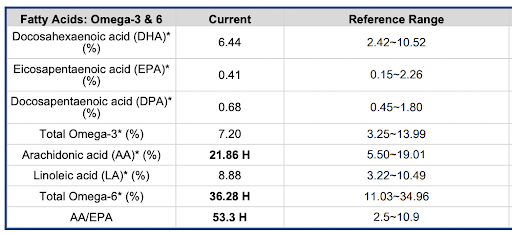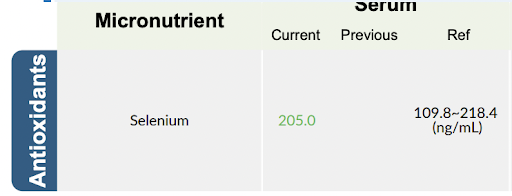Exploring the Impact of Micronutrients on Well-Being
Micronutrients, or the vitamins and minerals your body needs, typically work like a team. To illustrate this point, let’s look at some collaborative examples you see in everyday life.
Have you ever been part of a group or community where everyone works together while carrying out their specific roles? Maybe you have been on an athletic team or part of a community organization. Or, perhaps you’ve participated in a group project at work.
When everyone executes their role consistently, things move smoothly. Your team wins the game. You are surrounded by a community that makes you feel safe and welcome. Or, you and your co-workers get the well-deserved promotion.
However, you’ve probably also been on a team where things didn’t go as planned. Maybe the roles were not explained well enough. Or, someone didn’t show up to do their part. Depending on the degree of disorganization, the task at hand may be able to still be recovered. Unfortunately, if the disorganization is severe enough, the task at hand may suffer irreversible damage and have negative consequences.
How Micronutrients Work in the Human Body
Micronutrients work in a similar fashion. Vitamins and minerals play many important roles in our body’s overall health and function. When they’re each present in their unique optimal levels, the body is in a prime position for longevity, health, and wellness.
However, when a deficiency of one or more of these vitamins and minerals is present, negative health outcomes can occur. These might range from acute symptoms, such as nausea, vomiting, and declining cognitive function, all the way to increasing chronic disease risk over a longer period of deficiency.
Micronutrient Testing Identifies Vitamin and Mineral Imbalances
At my functional medicine practice, we test for several key micronutrients that have been identified as common micronutrient deficiencies. What many people don’t realize is that many of the symptoms they experience daily can oftentimes be linked to an imbalanced micronutrient level. Whether it be constipation, fatigue, brain fog, or decreased mood, these symptoms can often be traced to having too little or too much of a certain vitamin or mineral.
Many of the micronutrients we will discuss can be obtained in adequate amounts through food. However, for those with chronically low levels of a certain vitamin or mineral, supplementation may be necessary. Also, for certain health conditions or diseases, supplements may be necessary in order to optimize health.
Regardless of the recommended need for supplementation, always talk to a licensed healthcare provider before beginning or changing a supplement. In addition, having lab data on a micronutrient can help determine if supplementation is even necessary.
Key Micronutrients That Are Essential For Human Health
1. Vitamin B12: The “Energy Vitamin”
Many people in our world today are familiar with B12 (scientific name: cobalamin). Vitamin B12 has many more functions than simply managing energy. It plays a key role in synthesizing DNA. In addition, this water-soluble vitamin helps to make red blood cells.
Signs of Vitamin B12 Deficiency
Common symptoms experienced by people with Vitamin B12 deficiency include:
- Brain fog
- Low energy
- Depression
- Anemia
- Tingling
- Anorexia (low appetite)
- Weakness
- Constipation
Who Is At Risk For Vitamin B12 Deficiency?
- Individuals with pernicious anemia – They have difficulty maintaining adequate B12 levels.
- People who follow a vegetarian diet – This is due to many plant-based foods lacking adequate amounts of this vitamin.
- Older adults – They have increased deficiency risk due to lower dietary intake.
- People with GI disorders – They are more likely to have lower B12 levels due to decreased absorption of B12 in the GI tract.
On the flip side, there may also be a risk of toxicity for certain micronutrients, where the level gets too high. However, for Vitamin B12, toxicity is uncommon due to B12 being water soluble. In the rare event toxicity is found through lab work, people may experience symptoms such as diarrhea, headaches, nausea, and vomiting.
Vitamin B12 deficiency has also been linked to several chronic diseases. These include Alzheimer’s, multiple sclerosis (MS), depression, anxiety, autism, male and female infertility, and certain types of cancer.¹
The optimal lab level of vitamin B12 should be between 800-1000 pg/mL to support the functions listed above. The Recommended Dietary Allowance (RDA) of Vitamin B12 intake through food (not through supplementation) is 2.4 micrograms (mcg) per day.1 (Please note: all remaining RDA’s are for healthy, non-pregnant, non-lactating adults below the age of 65).
Some common food sources for vitamin B12 are high-quality animal protein, tempeh, bananas, spinach, kidney beans, seafood (including tuna and salmon), organ meats (such as beef liver), eggs, and dairy.²

Lab Credit: Vibrant America
2. Vitamin D: The “Sunshine Vitamin”
Another of the most important micronutrients is Vitamin D. One of the forms of Vitamin D can be synthesized from the sun, giving it the nickname, “the Sunshine Vitamin.” Vitamin D serves many roles, including promoting calcium absorption, ensuring calcium and phosphorus stay in balance, and decreasing inflammation.³ In addition, it has been linked to balancing blood sugar, supporting immune health, and the growing of cells.³
There are two common health concerns linked to Vitamin D deficiency: rickets in kids and osteoporosis in adults. Both of these conditions are related to poor bone health. Vitamin D deficiency has also been linked to certain types of cancer, heart disease, hyperlipidemia, depression, MS, type 2 diabetes, and thyroid health.³
Who Is At Risk For Vitamin D Deficiency?
- Older adults
- Breastfed infants
- People with fat malabsorptive disorders
- Gastric bypass patients
- Individuals with limited sun time
- People with higher levels of melanin in the skin³
Unlike Vitamin B12, Vitamin D is fat-soluble. This means the concentration of this vitamin is not as flexible as water-soluble vitamins and can build over time. With this being said, Vitamin D is more likely to become toxic.
Common Signs of Vitamin D Toxicity:
- Hypercalcemia
- Nausea and vomiting
- Muscle weakness
- Kidney failure
- Calcifying soft tissues
- Death (in severe cases)³
From a functional perspective, the optimal lab level of vitamin D is 50-60ng/mL. The RDA from food sources in adults is 600 International Units (IU) or 15 mcg.³ Vitamin D-rich food sources are limited, with the exception of fatty fish, cod liver oil, and organ meat.²

Lab Credit: Vibrant America
3. Omega-3 Fatty Acids: The “Anti-Inflammatory” Vitamins
Omega-3 fatty acids are a common deficiency in many Americans. They serve many roles, including promoting heart health, brain health, memory recall, hormone balance, and making phospholipids (important in the cell membrane). Omega-3 deficiency often leads to scaly skin and dermatitis.⁴
A multitude of studies have linked omega-3’s to minimizing many disease symptoms. These include heart disease, Alzheimer’s, rheumatoid arthritis, breast cancer, colorectal cancer, prostate cancer, age-related macular degeneration, and depression.⁴
Clinical deficiency of omega-3’s is rare in the United States, but those who have received nutrition through an IV (aka parenteral nutrition) may be at risk if not closely monitored. Similarly, toxicity is also rare, but if it does occur, immune system health decreases.
Types of Omega-3’s and Omega-6’s
There are three main types of omega-3’s: eicosapentaenoic acid (EPA), docosapentaenoic acid (DPA), and docosahexaenoic acid (DHA), and there are two main types of omega-6’s: arachidonic acid (AA) and linoleic acid (LA). To get a better understanding of the level of omega-3 in the blood compared to the level of omega-6, the AA/EPA ratio is used (optimal level <10.9).
Some omega-3 rich food sources are fatty fish (think salmon, mackerel, herring, sardines, tuna), along with flax and chia seeds.²

Lab Credit: Vibrant America
4. Glutathione: The “Antioxidant”
Glutathione has many important roles. These include:
- Antioxidant support
- Helping to make Vitamins C and E
- Moving mercury out of cells and the brain
- Decreasing muscle fatigue
- Decreasing wrinkles (potentially)
- Supporting mitochondrial health⁵
Common food sources of Glutathione include:
- Selenium-rich foods
- Almonds
- Avocados
- Okra
- Turmeric (also known as curcumin)
- Broccoli²
Glutathione has been linked to minimizing symptoms in several health conditions. These include metabolic syndrome, thyroid dysfunction, chronic kidney disease (CKD), heart disease (CVD), and hepatic disorders.⁵
There is currently no RDA for glutathione. Smokers and alcoholics are commonly at risk of deficiency due to tobacco and alcohol impacting glutathione’s absorption.⁶ Although toxicity is not common, fever and sudden chills may occur.⁶ The optimal lab range is 373-838 uM.

Lab Credit: Vibrant America
5. Selenium + Iodine: Thyroid Health
Both selenium and iodine are micronutrients that are important in thyroid balance. Selenium also plays a role in antioxidant support, reproduction, and making DNA.⁷
Common food sources of selenium include:
- High-quality protein
- Brazil nuts
- Seafood
- Organ meats
- Brown rice²
The RDA for selenium is 55 micrograms.⁷ Selenium deficiency has been linked to Keshan’s disease (cardiomyopathy) and male infertility, and those specifically at risk are dialysis patients and those diagnosed with HIV.⁷ In addition, selenium deficiency has been linked to several types of cancer, cardiovascular disease, and thyroid dysfunction. Unfortunately, selenium toxicity is more common than the other micronutrients discussed so far, and symptoms can include garlic odor , metallic taste, along with hair and nail brittleness.⁷ From a functional perspective, the optimal lab value for selenium is 0.55-1.1 ug/g.

Lab Credit: Vibrant America
Iodine specifically works to maintain female breast health and immune health and convert T4 to T3.⁸ Common food sources are seaweed, fish, and eggs.² The RDA for Iodine is 40-92 micrograms per liter.⁸
Iodine deficiency can lead to intellectual disability and hypothyroidism. Furthermore, pregnant women, those who don’t eat seafood, dairy or eggs, and those with high goitrogen consumption (cassava, cruciferous, and soy) are all at risk of deficiency.⁸
Iodine is very important in memory recall (especially in children) and preventing thyroid cancer.⁸ Just like with selenium, it is common to have too much iodine. This results in signs of hypothyroidism, high TSH, and goiter.⁸ The optimal lab level for iodine is 40-92 micrograms per liter.

Lab Credit: Vibrant America
6. Iron+ Anemia
Iron is linked to connective tissue health, muscle breakdown, and making up part of hemoglobin.⁹ It is found in food from two sources: heme and non-heme. Heme iron is found in animal products (especially red meat), while non-heme iron is present in plant products (nuts, beans, and tofu).²
If iron deficiency is present, iron deficiency anemia and anemia of chronic disease may occur if levels get too low. Deficiency commonly occurs in three stages. In the final stage (critical deficiency), symptoms include fatigue, GI distress, decreased immune function, and difficulty concentrating.⁹
People at risk of iron deficiency include:
- Pregnant women
- Women with heavy periods
- People with cancer
- Heart failure patients
- Individuals suffering from various GI diseases⁹
On the flip side, toxicity from excess iron may also occur. Some signs of iron toxicity include decreased zinc levels, tissue damage, organ failure, blood loss, and in extreme cases, death.⁹ The optimal level of iron is typically measured through the storage form, ferritin, and is 80-110 ng/mL.

Lab Credit: Vibrant America
7. Magnesium: The “Multi-Mineral”
Magnesium has also become very popular lately, mostly due to the many important roles it has! It has been linked to energy levels, muscle health, sleep, bowel regularity, moving calcium +potassium into cells, as well as making glutathione, DNA, and RNA.¹⁰
Common food sources of magnesium include dark chocolate, green leafy vegetables, and nuts and seeds including pumpkin seeds, chia seeds, and almonds.² The RDA for magnesium is 420 milligrams for males and 320 milligrams for females.¹⁰
Common signs of magnesium deficiency include:
- Constipation
- Tingling
- Muscle contractions
- Abnormal heart rhythms¹⁰
Those at risk of deficiency include people with GI disease (due to the depletion over time), type 2 diabetes (related to insulin resistance), alcoholism, and older adults (due to lower dietary intake).¹⁰
On a positive note, adequate magnesium levels lower cardiovascular disease and type 2 diabetes risk.¹⁰ In addition, magnesium deficiency leads to headache, and adequate magnesium levels have been shown to minimize migraine occurrence.
Although less common than deficiency, magnesium toxicity may occur and includes symptoms of diarrhea and cramping.¹⁰ From a lab perspective, the optimal serum magnesium level is 2.2-2.5 mg/dL.

Lab Credit: Vibrant America
Lab Testing For Micronutrients Can Play a Role in Optimal Health
In closing, these micronutrients, along with so many more, play major roles in making sure our health is optimal, both in the long-term and short-term. Our functional lab testing measures levels of these micronutrients. Then, if needed, our functional medicine experts can recommend additional food sources or supplements to correct any less than optimal levels.
If you’re interested in getting to the root cause of your health concerns, reach out to us today. Our functional lab testing and functional wellness coaching programs could help you heal your gut, correct micronutrient imbalances, or simply improve your overall health.
Sources:
¹ https://ods.od.nih.gov/factsheets/VitaminB12-HealthProfessional/#h5
² Nahikian-Nelms, Marcia. Nutrition Therapy and Pathophysiology. Cengage, 2020
³ https://ods.od.nih.gov/factsheets/VitaminD-HealthProfessional/
⁴ https://ods.od.nih.gov/factsheets/Omega3FattyAcids-HealthProfessional/
⁵ https://www.ncbi.nlm.nih.gov/pmc/articles/PMC4684116/
⁶ https://www.ncbi.nlm.nih.gov/pmc/articles/PMC9616098/
⁷ https://ods.od.nih.gov/factsheets/Selenium-HealthProfessional/
⁸ https://ods.od.nih.gov/factsheets/Iodine-HealthProfessional/
⁹ https://ods.od.nih.gov/factsheets/Iron-HealthProfessional/
¹⁰https://ods.od.nih.gov/factsheets/Magnesium-HealthProfessional/

Rachel Scheer is a Certified Nutritionist who received her degree from Baylor University in Nutrition Science and Dietetics. Rachel has her own private nutrition and counseling practice located in McKinney, Texas. Rachel has helped clients with a wide range of nutritional needs enhance their athletic performance, improve their physical and mental health, and make positive lifelong eating and exercise behavior changes.
Read This Next
Micronutrients, or the vitamins and minerals your body needs, typically work like a team. To…
If you want to improve gut health, or even optimize your overall health, you’ve probably…
Have you ever found yourself grappling with the discomfort of abdominal distension, bloating, or cramping,…



